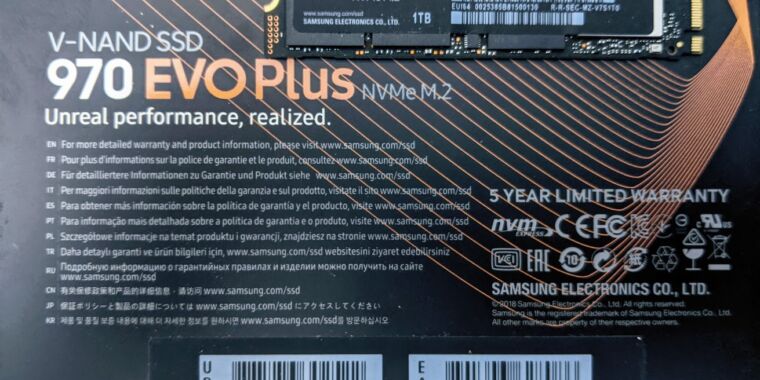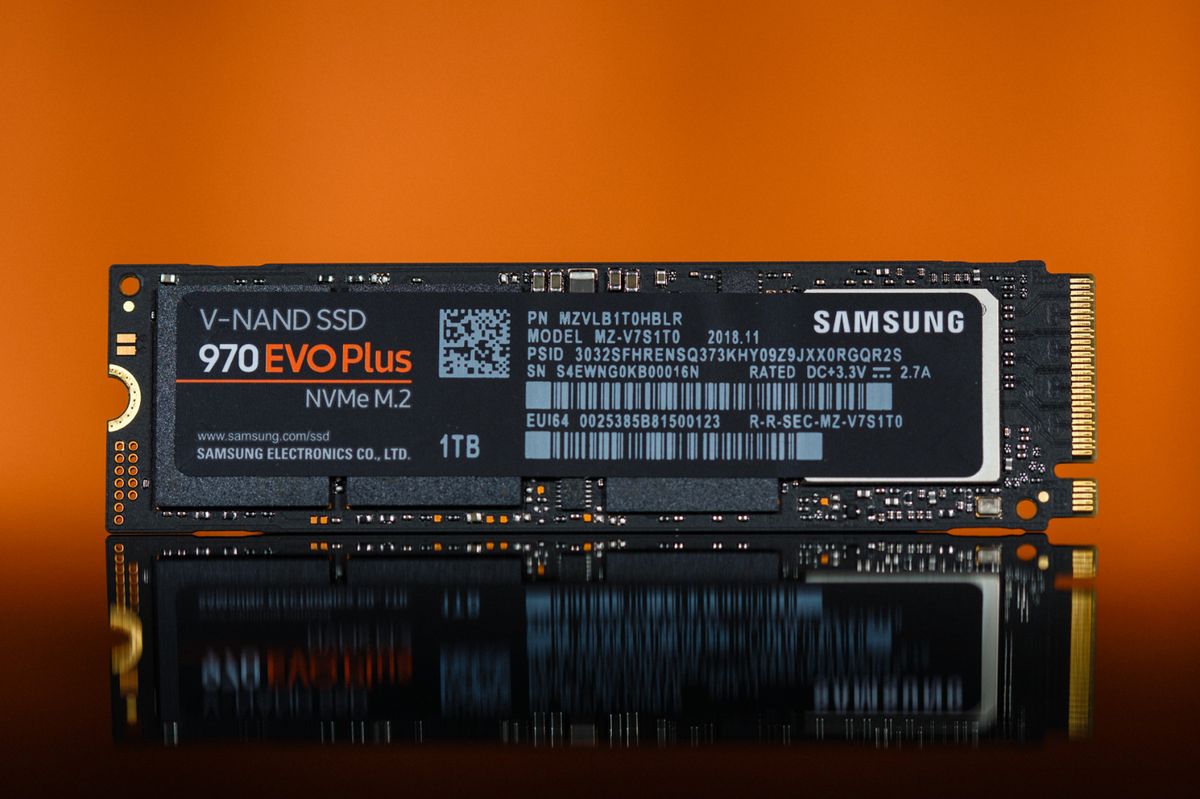GuinGuin
Banned
Recently, major SSD vendors Crucial and Western Digital have both been caught swapping out TLC NAND in their consumer SSDs for cheaper but much lower-performance, lower-endurance QLC NAND. Samsung appears to be joining them in the part-swapping corner of shame today, thanks to Chinese Youtuber 潮玩客, who documented a new version of the Samsung 970 Evo Plus using an inferior drive controller.
潮玩客 first tested the old and new 970 Evo Plus drives using CrystalDiskMark, and the drives appeared near-identical. But that's because CrystalDiskMark by default uses a very small 1GiB test size, which clearly is not enough to exhaust either drive's write cache. (We at Ars frequently use CrystalDiskMark—but we select larger test sizes, for precisely this reason.)
In longer tests, both drives decrease sharply in performance as cache fills, which is expected. But while the older drive retains nearly two-thirds of its original performance, the newer version craters to less than a third. We can see this effect not only in artificial benchmarks, but also in large file copies, as seen in 潮玩客's later tests.

 arstechnica.com
arstechnica.com
Shameful stuff.
潮玩客 first tested the old and new 970 Evo Plus drives using CrystalDiskMark, and the drives appeared near-identical. But that's because CrystalDiskMark by default uses a very small 1GiB test size, which clearly is not enough to exhaust either drive's write cache. (We at Ars frequently use CrystalDiskMark—but we select larger test sizes, for precisely this reason.)
In longer tests, both drives decrease sharply in performance as cache fills, which is expected. But while the older drive retains nearly two-thirds of its original performance, the newer version craters to less than a third. We can see this effect not only in artificial benchmarks, but also in large file copies, as seen in 潮玩客's later tests.

Samsung seemingly caught swapping components in its 970 Evo Plus SSDs
The Phoenix controller in Samsung's own product images isn't present on newer drives.
Shameful stuff.
Last edited:

